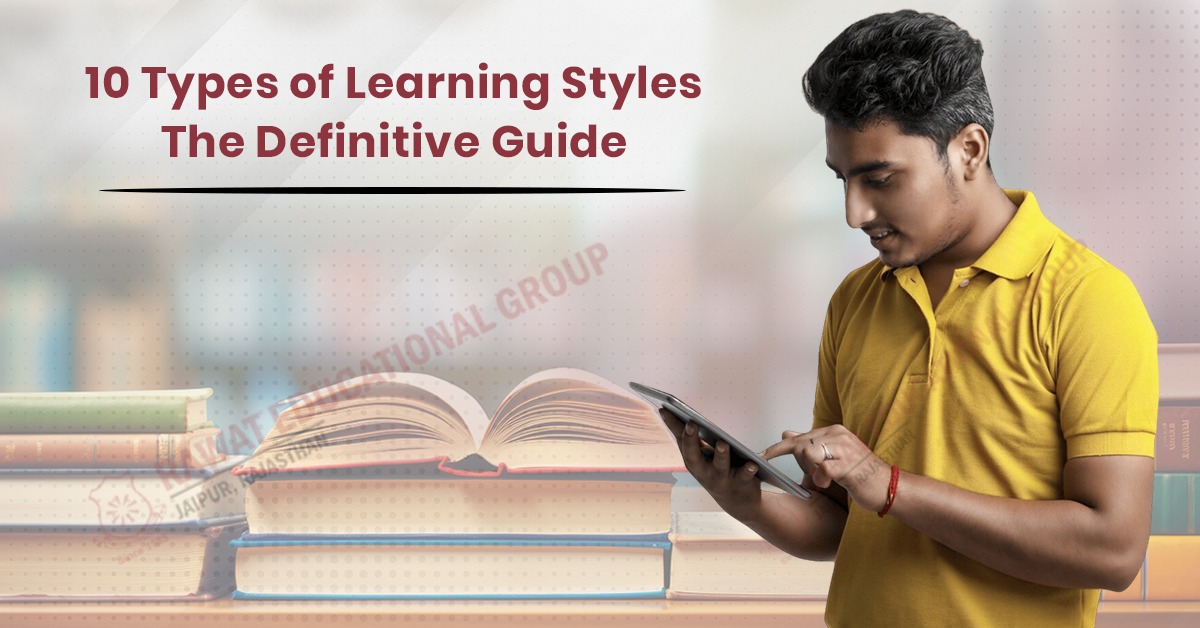
November 15, 2023
10 Types of Learning Styles | The Definitive Guide
Learning styles refer to the diverse ways individuals absorb, process, and retain information. Several models categorize these styles, with the most common being visual, auditory, and kinesthetic learning. Visual learners grasp concepts through images, charts, and graphs, while auditory learners benefit from spoken words and discussions. Kinesthetic learners, on the other hand, thrive through hands-on experiences and physical activities. Another model introduces the concept of sensory modalities, recognizing individuals as either visual, auditory, reading/writing, or kinesthetic learners. This emphasizes preferences for visual aids, verbal explanations, reading, or tactile involvement, respectively.
Understanding and accommodating different learning styles is crucial in today's dynamic educational landscape. Traditional one-size-fits-all teaching methods may not resonate with every student, and recognizing diverse learning styles ensures a more inclusive and effective education. In a technologically advanced era, where information is abundant and accessible, tailoring teaching strategies to accommodate various learning styles helps students engage more deeply with the material. For instance, incorporating visual aids such as infographics, videos, and interactive simulations caters to visual and kinesthetic learners, making complex concepts more accessible.
Moreover, acknowledging diverse learning styles promotes a positive learning experience and enhances overall comprehension. Students who align their study approaches with their preferred learning styles often exhibit increased motivation, confidence, and retention. This personalized approach cultivates a sense of autonomy and empowers learners to take responsibility for their education. Additionally, in collaborative learning environments, recognizing and respecting diverse learning styles fosters effective teamwork, as students can contribute based on their individual strengths.
Types of Learning Styles
There are various types of learning, and they can be broadly categorized based on different criteria. Here are 10 different types of learning, each explained in detail:
1. Explicit Learning:
- Explicit learning involves the conscious and intentional acquisition of knowledge or skills. Learners are aware of the information they are trying to gain, and the learning process is typically formal and structured.
- Example: Attending a classroom lecture, reading a textbook, or taking an online course.
2. Implicit Learning:
- Implicit learning occurs unconsciously, and individuals acquire knowledge without being aware of the learning process. This type of learning often involves picking up patterns and skills through exposure and experience.
- Example: Learning to ride a bike or recognizing speech patterns.
3. Experiential Learning:
- Experiential learning is centered around hands-on experiences and reflection. It emphasizes the idea that individuals learn best through direct engagement with real-world situations.
- Example: Internships, field trips, or practical laboratory sessions.
4. Observational Learning:
- Also known as social learning, observational learning occurs by watching and imitating the behaviors of others. This type of learning is heavily influenced by role models and the consequences of observed actions.
- Example: Learning to cook by watching someone prepare a meal.
5. Associative Learning:
- Associative learning involves making connections between stimuli or events. It can be classified into classical conditioning (associating two stimuli) and operant conditioning (associating behavior with consequences).
- Example: Pavlov's experiments with dogs (classical conditioning) or rewarding a dog for performing a trick (operant conditioning).
6. Cooperative Learning:
- Cooperative learning emphasizes collaboration among learners. It involves working together in groups to achieve a common goal, fostering teamwork and mutual support.
- Example: Group projects, team-based activities, or problem-solving tasks in a collaborative setting.
7. Inquiry-Based Learning:
- Inquiry-based learning focuses on encouraging learners to ask questions, explore topics, and discover answers on their own. It promotes critical thinking and problem-solving skills.
- Example: Science experiments, research projects, or investigations.
8. Self-directed Learning:
- Self-directed learning places the responsibility for learning on the individual. Learners take initiative in planning, implementing, and evaluating their own learning process.
- Example: Learning a new language through self-study or pursuing a personal interest through online resources.
9. Conceptual Learning:
- Description: Focuses on understanding fundamental concepts and principles, enabling learners to apply knowledge to various contexts.
- Example: Learning the concept of gravity and understanding how it influences different aspects of physics.
10. Emotional Learning:
- Description: Involves recognizing and managing emotions, fostering emotional intelligence, and understanding how emotions impact learning and decision-making.
- Example: Social-emotional learning programs that teach students to navigate and understand their emotions.
11. Inquiry-based Learning:
- Description: Encourages active exploration, critical thinking, and problem-solving by posing questions and investigating solutions.
- Example: Science experiments where students formulate hypotheses, conduct experiments, and draw conclusions.
Also read: Benefits Of Meditation For Students
Conclusion
In conclusion, recognizing and accommodating diverse learning styles in education is of paramount importance. The multifaceted nature of human cognition and preferences underscores the need for a varied and inclusive approach to teaching and learning. By acknowledging that individuals have distinct ways of absorbing and processing information—whether through visual, auditory, kinesthetic, or other modalities—educators can tailor their instructional methods to better engage students. This personalized approach not only enhances comprehension but also cultivates a positive and empowering learning experience.
The significance of addressing various learning styles becomes particularly pronounced in today's educational landscape. As technology advances and information becomes more readily accessible, the traditional one-size-fits-all model of teaching is increasingly inadequate. Students are more likely to thrive when instruction aligns with their preferred learning styles, fostering a deeper connection to the material and promoting a sense of ownership over their education. Moreover, a diverse approach to learning styles accommodates the collaborative and dynamic nature of contemporary workplaces, where individuals must draw upon their unique strengths to contribute effectively to team efforts.